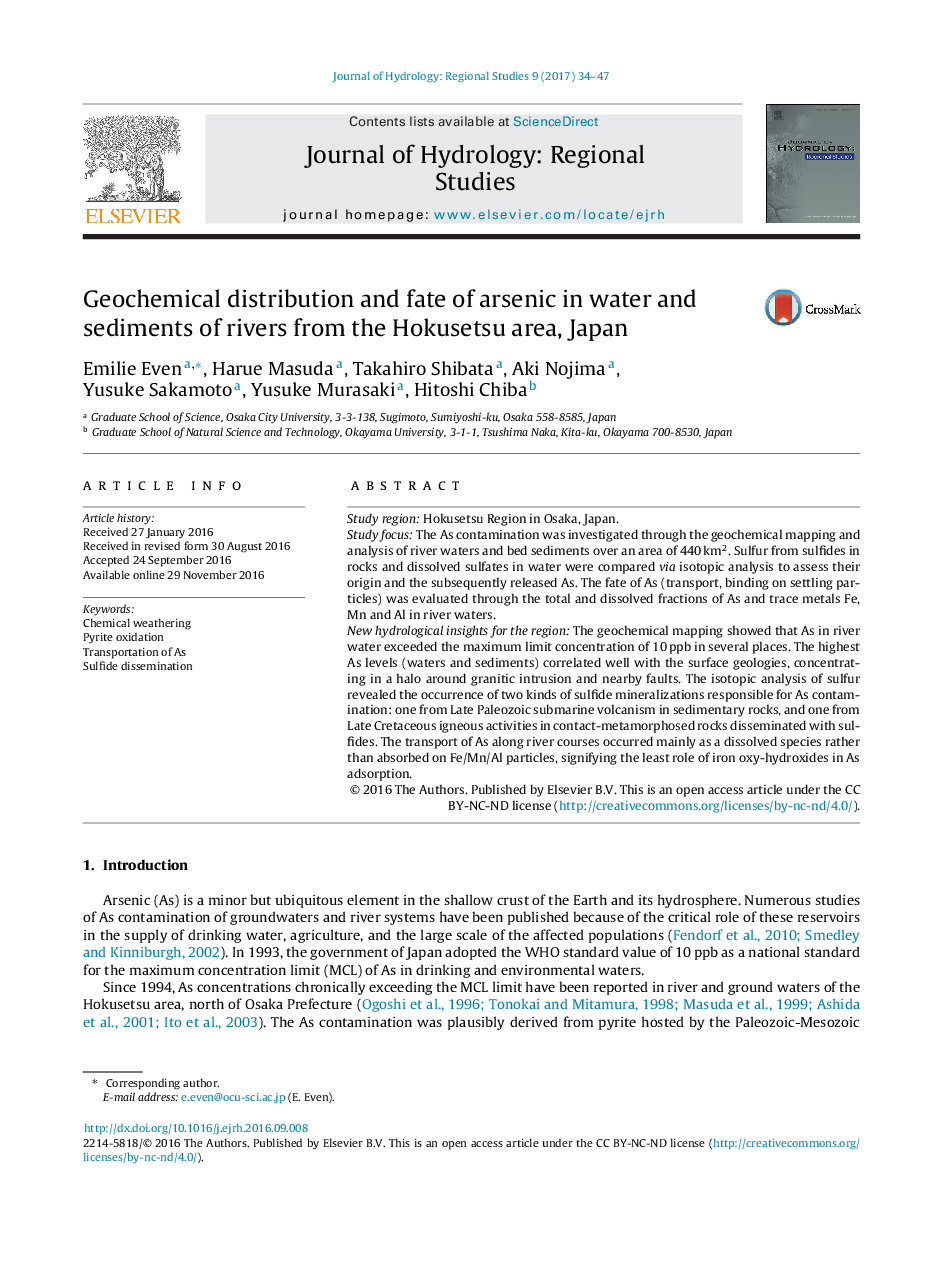| Article ID | Journal | Published Year | Pages | File Type |
|---|---|---|---|---|
| 5752200 | Journal of Hydrology: Regional Studies | 2017 | 14 Pages |
Study regionHokusetsu Region in Osaka, Japan.Study focusThe As contamination was investigated through the geochemical mapping and analysis of river waters and bed sediments over an area of 440Â km2. Sulfur from sulfides in rocks and dissolved sulfates in water were compared via isotopic analysis to assess their origin and the subsequently released As. The fate of As (transport, binding on settling particles) was evaluated through the total and dissolved fractions of As and trace metals Fe, Mn and Al in river waters.New hydrological insights for the regionThe geochemical mapping showed that As in river water exceeded the maximum limit concentration of 10Â ppb in several places. The highest As levels (waters and sediments) correlated well with the surface geologies, concentrating in a halo around granitic intrusion and nearby faults. The isotopic analysis of sulfur revealed the occurrence of two kinds of sulfide mineralizations responsible for As contamination: one from Late Paleozoic submarine volcanism in sedimentary rocks, and one from Late Cretaceous igneous activities in contact-metamorphosed rocks disseminated with sulfides. The transport of As along river courses occurred mainly as a dissolved species rather than absorbed on Fe/Mn/Al particles, signifying the least role of iron oxy-hydroxides in As adsorption.
